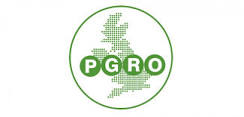“The trading of old crop pulses is over with movement of stocks a priority. New crop has received variable reports for both pea and bean crops around the regions,” comments Roger Vickers, Chief Executive of PGRO. “Concerns for beans exist with apparent low pod set in some crops. Whilst pod set in peas appears normal, there are reports of low seed numbers. Both of these issues are likely directly related to the very poor weather that had been cold and persistently very wet during the main flowering season.”
Late sown beans without water stress can perform very well but the recommendation for late sown beans is to reduce population density. Later sown crops with high density populations are likely to show poorer performance even in good years.
On the positive side, reports of Bruchid beetle damage have been lower this year – again a factor of the very cool wet conditions during flowering. Post-flowering, cercospora and chocolate spot have been prevalent, and in recent days with some hot drier weather, bean crops are under heavy threat from bean rust disease.
Pea crops are now racing towards harvest in the south and midlands. Growers are urged to focus on timely harvest, careful drying to preserve quality and retain margin potential.
Chris Collings, President of BEPA, comments that the French bean crop is again reportedly poor – with the French having a terrible time all round. However, French beans will compete strongly in the export feed markets and it is believed that their poor weather has reduced bruchid levels too.
The main European competition for UK pulses will once again be from the Baltic States, where conditions have apparently been good so far and good quality and quantity are forecast.
Feed beans are valued at circa £145/t ex farm, but there are few offers from sellers. Demand from the UK feed industry remains enthusiastic. A significant amount of their requirement has been covered as they aim to ensure continuity of supply.
For human consumption beans, whilst the Sudanese market is again open and there is some demand, Egypt as the main market is still suffering with further tightening payment concerns and the lack of US$. The exchange rate has risen from 8 to 12 Egyptian Pounds/US$ during 2016, restricting import opportunities further.
There is little current or forward trade. Export activity post harvest is likely to be dominated by spot activity. Whilst there are few buyers in the market at present, there is also great reluctance to sell with uncertainty about yields and quality yet to come.
Recent Sterling devaluations will help exports but have coincided with price rises When a human consumption premium is added in, beans are valued at circa £170-175/t ex farm with the usual regional variations.
Turning to combining peas, the harvest for marrowfat peas is eagerly awaited. Growers must to do all they can to preserve quality – especially colour. Free market prices remain estimated at circa £250/t ex, but there are few buyers and less sellers at this stage. Export buyer interest is increasing as concerns about harvest 2016 reach them.
Prices for large blue peas have risen a little recently with awareness of little carry over and suspicions that yields may be down slightly. Prices circa £200/t ex could be available for early sellers of good quality. The weaker Sterling will aid competition in export markets.
For yellow peas, relatively high prices of last year are thought unlikely to be repeated in 2016 as supplies pick up again. This is a small crop in the UK and most production will already be committed to contracts.




